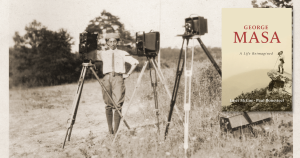
George Masa’s influence recognized as biography publication draws near
Throughout the National Park Service’s 108-year history, countless people have made sacrifices, taken stands, and

Throughout the National Park Service’s 108-year history, countless people have made sacrifices, taken stands, and

This April, Smokies Life received national recognition at the 2024 Public Lands Alliance Partnership Awards

Frank X Walker and David Brill share a fascination with the Great Smoky Mountains. One
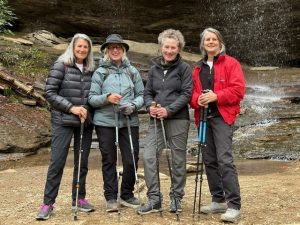
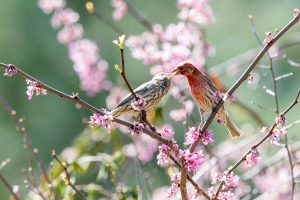
As the days grow warmer and the landscape ripples with color, a growing treetop chorus
Pam Yarnell, an avid hiker and a member of Great Smoky Mountains Association, sent me an email in February of this year asking for my help. She wanted to make sure others were able to learn about a significant artist who had a special connection to Great Smoky Mountains National Park.
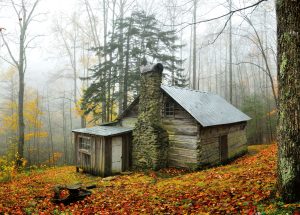
“A few years ago, a handful of us were hiking in the Elkmont area,” Yarnell wrote. “An 80-year-old gentleman who was hiking with us asked if we wanted to go see the ‘artist’s cabin.’ I had never heard of this — and so off we went.”
Yarnell ended up on a mountainside overlooking Jakes Creek, about a mile south of the remains of the Elkmont community, at a log cabin known for having belonged to one of Tennessee’s most esteemed artists: Mayna Treanor Avent. Yarnell immediately became fascinated with the well-traveled woman who used this humble place as a summer studio, painting and sketching in the light that streamed in through an oversized window. Yarnell was especially intrigued when she saw that an article about Avent from Smokies Life journal had been cut out and placed in the cabin.
“The pages unfortunately had partially been eaten by mice,” Yarnell wrote to me. “So a few days later I hiked back to the cabin and put the article in plastic sleeves to protect the pages. If there is any way to get another protected copy to place in the cabin, I know hiking enthusiasts would enjoy reading about this incredible woman as well.”
My staff and I set to work getting another article printed out, placed in protective plastic sleeves, and mailed to Yarnell. By March, she had taken the new copy of the article to the cabin — and said on the way she “met a nice couple from Kingsport who were trying to find the cabin, so it was great to share the information and directions with them too.”
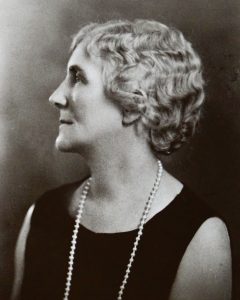
“A native of Nashville, Mayna Avent began visiting and painting the Smokies in 1910, and used the cabin as her summer studio from the mid 1920s until 1940,” writes Courtney Lix in Mayna Avent: Artist in the Woods, which appears in the September 2010 issue of Smokies Life.
The story tells that, though her parents named her Mary, she dubbed herself Mayna as a child, a name that matched her unusual personality. The family encouraged her enthusiasm for art, allowing her to study first in Nashville and Cincinnati, then in Paris at the Académie Julian, following in the footsteps of artists like Henri Matisse, Diego Rivera, and John Singer Sargent. She would go on to have commissions from the Smithsonian’s National Portrait Gallery and Vanderbilt University School of Medicine, and her work was acquired by the Cheekwood Museum in Nashville, Morris Museum in Augusta, Georgia, and the Tennessee State Museum, which referred to her as “a pathfinder for future generations of women . . . an important transitional figure in art in Tennessee and in the South.”
Lix writes that “she painted mostly in oils but was also adept at pen-and-ink sketching, gouache (a water-soluble paint), charcoal, watercolors, and graphite pencil. She also used a technique called white-line woodcut which was a variation on the Japanese traditional technique of woodblock printing. . . . Her best-known woodcut is of her cabin in the Smokies.”
The cabin itself is one of the park’s oldest structures, hewn by hand from oak, chestnut, and poplar in the mid 1800s. Lix writes that, in the early 1990s, “there was talk of demolishing the cabin, as the National Park Service planned to restore much of Elkmont to its natural habitat for environmental reasons and because funds for historic building maintenance were slim.” Its preservation is a tribute to Avent’s remarkable talent.
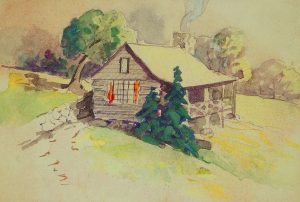
Last November, Yarnell and some of her hiking buddies drove to Mayna’s childhood home, the beautiful antebellum mansion Tulip Grove located directly across from the Hermitage, Andrew Jackson’s estate near Nashville. “It was really special to connect both places,” she said.
Since her first visit to the Avent cabin years ago, Yarnell has gone back on several occasions to leave new guest books for visitors to sign as existing ones continue to overflow with the names of hundreds of hikers who discover the remote structure and are drawn into the story of its famous occupant artist.
“This cabin has been one of my favorite places to take friends, family, newcomers to this area,” she said. “It’s only a two-mile round trip from the Elkmont upper parking lot but a bit hidden, which makes the hike even more exciting when we find the right trail, cross the log bridge, then head up the bank to this beautiful abode.”
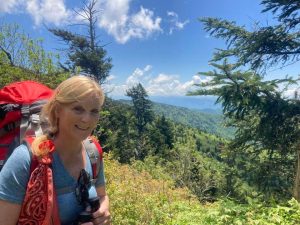
At the end of June, Yarnell wrote to tell me she had recently hiked to Avent cabin and took her daughter and her husband who live in Virginia. She said she was pleasantly surprised to see that our plastic sleeves had been replaced with “nice, laminated sheets” and that there were now plaques and framed photos of Avent on the walls. “I’m sure you were able to get someone to do that so just wanted to thank you! It looks great.”
I wrote back to tell her I had not orchestrated the new commemorative additions to the cabin but was excited to hear that other hikers like her were out there celebrating this special soul and keeping her Smokies story alive.
Courtney Lix’s article “Mayna Avent: Artist in the Woods” can be found in the September 2010 issue of Smokies Life (Vol. 4, Issue 2). Her story is also told in Women of the Smokies by Lix. Both are sold in park bookstores and online at SmokiesInformation.org.
If you would like to receive a PDF of the Mayna Avent article, reach out to Frances at frances@gsmassoc.org.
The Great Smokies Welcome Center is located on U.S. 321 in Townsend, TN, 2 miles from the west entrance to Great Smoky Mountains National Park. Visitors can get information about things to see and do in and around the national park and shop from a wide selection of books, gifts, and other Smokies merchandise. Daily, weekly, and annual parking tags for the national park are also available.